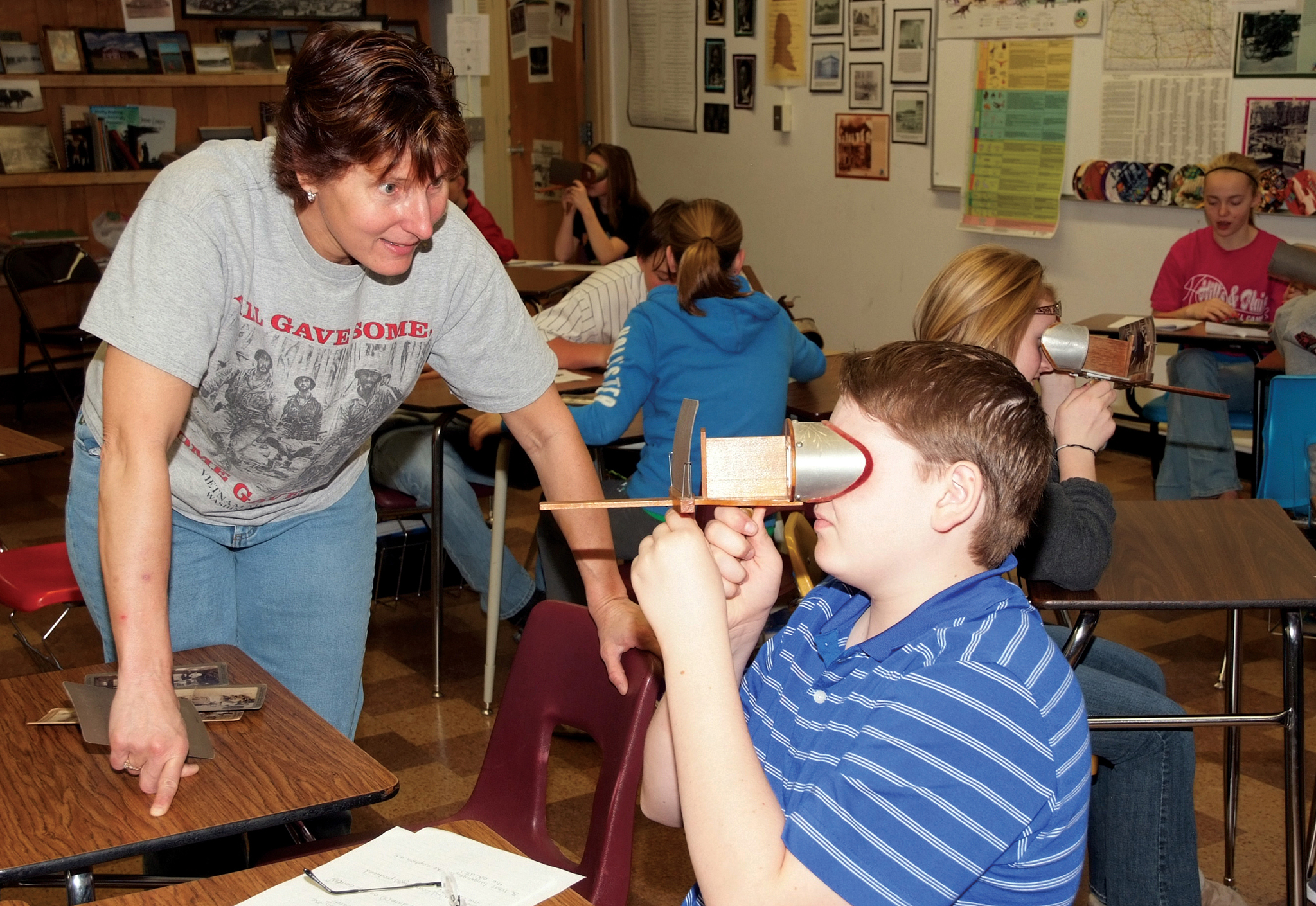News
Experiencing history first hand
Scott Wagar
04/10/2012

As the old saying goes, “seeing history in the present is always a good time,” was very true for Gale Wondrasek-Lane’s history students on Thursday when Wondrasek-Lane held a “Hands on History” day for her kids.
The theme of Wondrasek-Lane’s project fit perfectly with her event considering she presented to her students an invention that was created in 1832 called a stereoscope, which is a handheld machine that creates a three-dimensional image.
“The stereoscope, or stereo view, consisted of double set paper prints mounted on card stock to be viewed through a stereoscope that produces the three dimensional image, Wondrasek-Lane said. “I collect stereoscopes and cards because they are a great glimpse in the past. With that, I had the idea to bring my collection of stereoscope cards to class today, along with three of my own stereoscopes, and four that I borrowed from Mrs. Twilla Glinz.”
Sir Charles Wheatstone invented the stereoscope in the early 19th century, which was the precursor of today’s modern day glasses that individuals wear when looking at 3D movies. Wheatstone’s invention was very bulky and it took two hands to operate, unlike today’s lightweight and comfortable glasses people wear when looking at 3D images.
For Wheatstone in the 1830s, the majority of the pictures he used for his instrument were drawings because photos were not plentiful at that time.
However, as photographs became available to the masses, the stereoscope turned from drawings to photos, which became a favorite pastime for many Americans.
“They became a popular photographic medium in Europe in the mid-1800s, and through mass production methods became widely distributed in the United States by the early 1900s,” Wondrasek said. “Stereoscopes reached their peak of popular distribution in the years 1902 through 1935 through business efforts of such companies as the Keystone View Company and Underwood & Underwood.”
Like individuals of past times, Wondrasek-Lane’s students enjoyed her stereoscopes and view cards. As the students peered through the viewing scope they laughed, gasped and had lots of history questions for their teacher.
“It is a great way for the kids to learn,” Wondrasek-Lane said. “They get to hold onto a piece of history, use it, learn from it and just enjoy it.”
Wondrasek-Lane has collected a variety of cards to look at through her stereoscopes.
“My favorite cards to collect are the humorous cards, along with the cards that have Native Americas people on them, along with hunting and fishing,” she said. “I do have my favorites, but I really like all my cards, mainly because it gives me the chance to remember how photography was taken in the late 1800s.”
Outside of Wondrasek-Lane’s stereoscopes and view cards, her classroom is truly a piece of history. When entering her room, it is like walking back in time, which gives her students the opportunity to be surrounded by history and live it in the present time, granting her students the opportunity to learn history every second they spend in class.
From historical photos, documents, books, posters, tools and even a collection of old vinyl records for her students to listen to, Wondrasek-Lane has her own little museum for her students to learn history.
“My classroom has a collection of my mom and dad’s photography which they took in Bottineau and the Turtle Mountain area,” Wondrasek-Lane said. “I have my collection of Life magazines, with favorite magazines being John F. Kennedy and the Dionne Quintuplets.
“I also have a collection of Native American hammerheads, along with a Cree basket and some beadwork,” Wondrasek-Lane continued to say. “My collection is here for my students to experience and I encourage them to look at the pictures, and read the books and magazines that I have in the classroom.”
On Thursday in Wondrasek-Lane’s class, it was a day for her students to experience the early age of 3D pictures in the United States; and, you can be certain it is an experience that will spin in their memory’s eye as they make their own history in this world.
